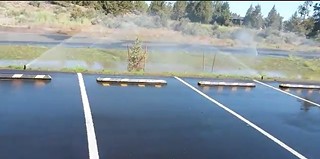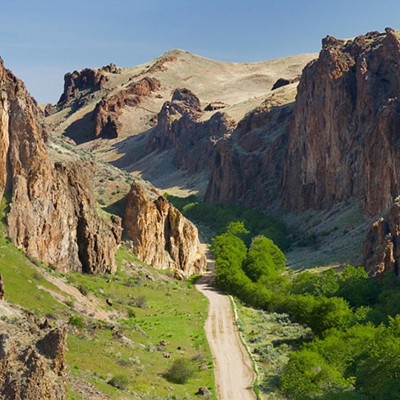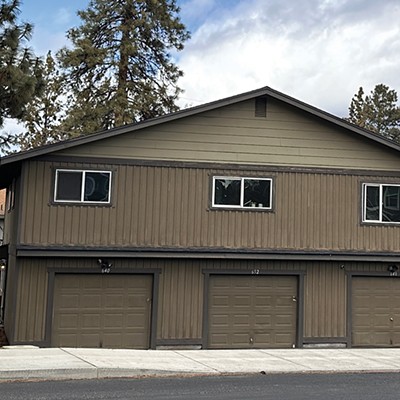Last Friday, Gov. Kate Brown added four more counties to the list of regions in Oregon that have reached emergency levels for drought—bringing the grand total to 19 of the state's 36 counties that are in such dire thirst; more than half.
Deschutes County has been on that list for a month, a designation that triggered the City of Bend to issue a Stage 1 Water Curtailment Alert and encourage residents—especially large water users—to reduce their water usage by 10 percent.
Perhaps the public agency with the biggest opportunity to reduce water use is Bend Park & Recreation District (BPRD), which uses 125 million gallons annually—or, about four gallons of water per resident to keep the parks and playing fields watered. But BPRD is placed in a tricky bind: Residents want their playing fields and parks to be verdant green, yet this requires an unnatural amount of water.
For consideration, affluence—and the expectations of an affluent community—is perhaps the strongest driver for water consumption, both by private homeowners and by public entities like Parks & Recreation. Consider that in California, the greatest and least consumers of water are adjacent neighborhoods: In Hillsborough, a high-rent and fashionable town on the peninsula south of San Francisco, residents consumer an average of 334 gallons a day, according to the San Jose Mercury News. Fewer than 15 miles away, residents in the working-class area of East Palo Alto use the least amount of water in the state, 79 gallons daily, a quarter as much as their wealthy neighbors in the very same climate and environment.
Over the past week, we have received a number of letters to the editor concerned about overwatering and misuse of water by BPRD. "I feel that if residents are expected to curtail water usage, our City should also be expected to cut back 10 percent and be a leader and example of water conservation," wrote a local resident. He had recently witnessed—and video taped—a city park where sprinklers were washing water onto a parking lot, and park medians were soaked in six inches of standing water. He goes on, "The watering of parking lots does not demonstrate this to me as a citizen."
But, to its credit, BPRD has done a reasonable job curbing water use in Bend. In fact, according Pat Erwert, the park services director, BPRD cut back water use by 10 percent a month ago; "All systems are running at 90 percent for turf grass and between 50-75 percent for shrub and planting beds."
Moreover, these reductions compound water conservation measures already in place: BPRD was the first agency in the region to implement high-tech operating systems that monitor weather patterns to fine-tune how much water is used and when, as well as site-specific control systems that monitor soil moisture and temperature-sensor technology to further conserve water consumption. All told, BPRD reduced water use by 20 percent last year, even before the governor and City officials made requests for water conservation.
"These upgrades help reduce human errors and allow parks to be watered more efficiently," explained Erwert.
Although its efforts may not be perfect—and there may be some spillage onto parking lots—by and large, BPRD deserves accolades for its water conservation measures; especially because, as the largest public consumer of water, it can serve as a role model for individuals throughout the city. Like, reduce lawn watering, people, and, seriously, reduce flushing; if it is yellow, just let it mellow!



























